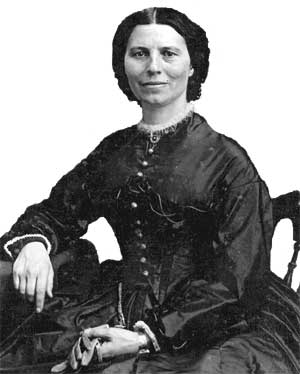Clara Barton and the Red Cross

|
|

|
|
|
|
Share This Page
|
|
|
|
|
|
|
Follow This Site

|
 |
|
|
|
|

|
Part 1: Her Early Life
The American Red Cross, a symbol of medical help known the world over, was the creation of a shy farm girl from Massachusetts, Clara Barton. It is perhaps one of medical history's greatest examples of "filling a need."
Barton was born on December 25, 1821, in Oxford, Mass. Her father was a farmer, but he had also been a soldier. He liked to tell his daughter stories about his army days, and her liking of these stories deepened into an appreciation of military life that stayed with her for her entire life.
Clara's brother, David, was badly injured in an accident when both children were young. When Clara was 11, she began to take care of David, as would a nurse, day and night. She did this for two years. This experience would help her later in life.
When she was 15, she started teaching. She did this for the next 18 years, and the experience helped her overcome her natural shyness. Among other things, she helped found a free public school in Bordentown, N.J.
 When she was 33, she moved to Washington, D.C. Seven years later, when the Civil War began, Clara was onhand to cook and get supplies for the Union troops.
When she was 33, she moved to Washington, D.C. Seven years later, when the Civil War began, Clara was onhand to cook and get supplies for the Union troops.
Her first wartime experience was in getting more supplies for the Northern soldiers. She did this by running newspaper advertisements, which resulted in large number of donations of food and supplies. Barton set up an agency to distribute these supplies.
Her assistance to the Northern soldiers went further in 1862, when she received government permission to attend to the sick and wounded, as a nurse. For the rest of the war, she served in this role, delivering provisions to the troops and taking care of the wounded. "What could I do but go with them [Civil War soldiers], or work for them and my country?" she said. "The patriot blood of my father was warm in my veins." She risked her life countless times but always survived. She came to be known as the "Angel of the Battlefield."
Next page > Her Efforts and History > Page 1, 2



 When she was 33, she moved to Washington, D.C. Seven years later, when the Civil War began, Clara was onhand to cook and get supplies for the Union troops.
When she was 33, she moved to Washington, D.C. Seven years later, when the Civil War began, Clara was onhand to cook and get supplies for the Union troops.
